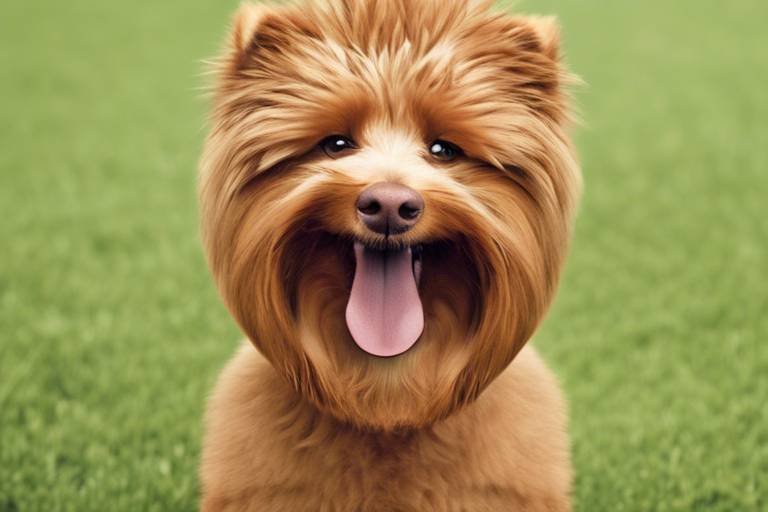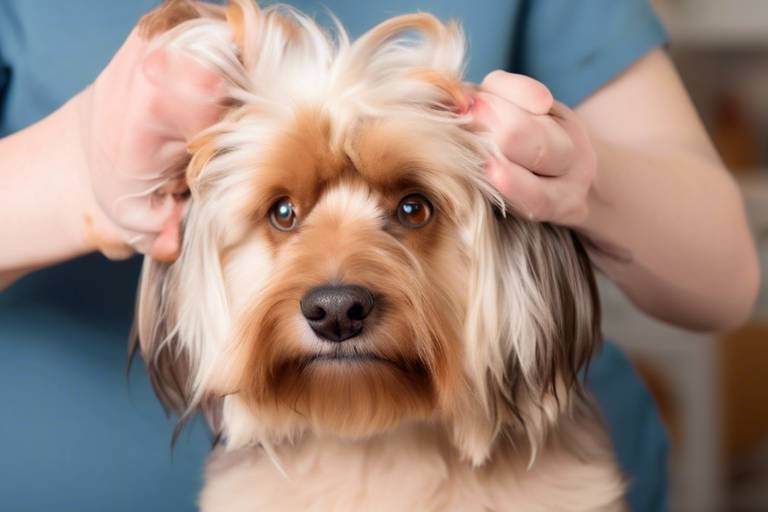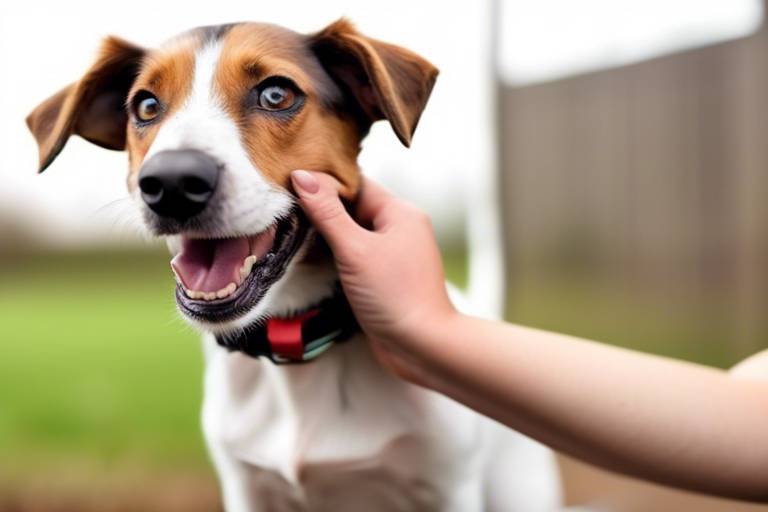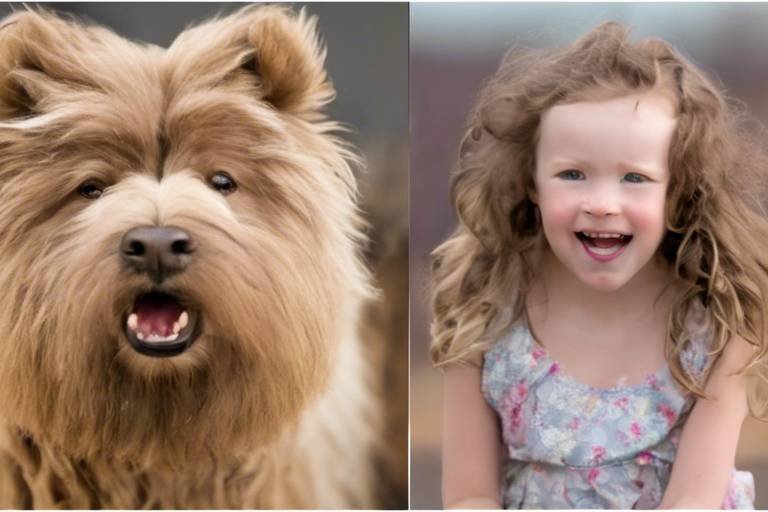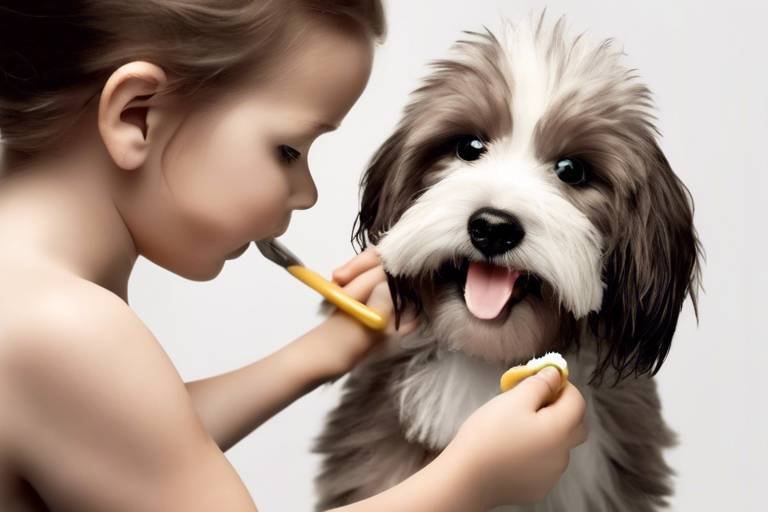The Role of Grooming in Reducing Shedding
Grooming your pet is not just about keeping them looking sharp; it's a vital part of their health and well-being. Regular grooming can significantly minimize shedding, which is a common concern for pet owners. Imagine your home free of fur tumbleweeds rolling across the floor or getting stuck to your favorite black sweater. By investing time in grooming, you're not only promoting a healthier coat but also enhancing your living environment. So, how does grooming work its magic? Let’s dive into the world of pet grooming and uncover the secrets to reducing shedding!
First off, it’s important to recognize that shedding is a natural process for pets; they lose old fur to make way for new growth. However, it’s essential to understand that not all shedding is created equal. Factors such as breed, season, and overall health can influence how much fur your pet sheds. For instance, dogs like the Labrador Retriever are notorious for their shedding, while breeds such as the Poodle shed very little. By regularly grooming your pet, you can manage this natural process more effectively.
One of the primary benefits of grooming is that it helps to remove loose fur before it ends up on your furniture and clothes. This proactive approach can make a world of difference in maintaining a fur-free home. Additionally, regular grooming can help to distribute natural oils throughout your pet’s coat, which keeps it shiny and healthy. Think of grooming as a spa day for your furry friend—who doesn’t love a good pampering session?
Moreover, grooming provides a unique opportunity for bonding between you and your pet. When you brush or bathe them, you’re not just cleaning their fur; you’re also spending quality time together, which strengthens your relationship. It’s a win-win situation! And let’s not forget about the early detection of skin issues. While grooming, you can easily spot any unusual lumps, bumps, or irritations on your pet’s skin. This early intervention can be crucial for ensuring your pet stays healthy.
As we explore the various grooming techniques and tools available, it’s essential to tailor your approach to your pet's specific needs. For example, short-haired breeds may require different brushes than long-haired ones. Understanding these differences will allow you to optimize your grooming routine, making it more effective in reducing shedding. In the upcoming sections, we will delve into the types of grooming tools available, the best grooming techniques, and how diet plays a role in your pet’s coat health.
In conclusion, grooming is an essential practice that can significantly reduce shedding while promoting your pet’s overall health and happiness. By incorporating regular grooming sessions into your routine, not only do you keep your home clean, but you also ensure your furry friend feels their best. So grab that brush and get ready to embark on a grooming adventure that will leave both you and your pet feeling fabulous!
- How often should I groom my pet? It depends on the breed and coat type. Generally, short-haired pets can be groomed once a week, while long-haired breeds may require daily grooming.
- What tools do I need for grooming? Basic tools include brushes, combs, and possibly specialized grooming gadgets for specific coat types.
- Can grooming help with allergies? Yes, regular grooming can reduce allergens in your home by minimizing shedding and dander.
- Is it necessary to bathe my pet regularly? Bathing frequency varies by breed and lifestyle, but generally, most pets benefit from a bath every few months.
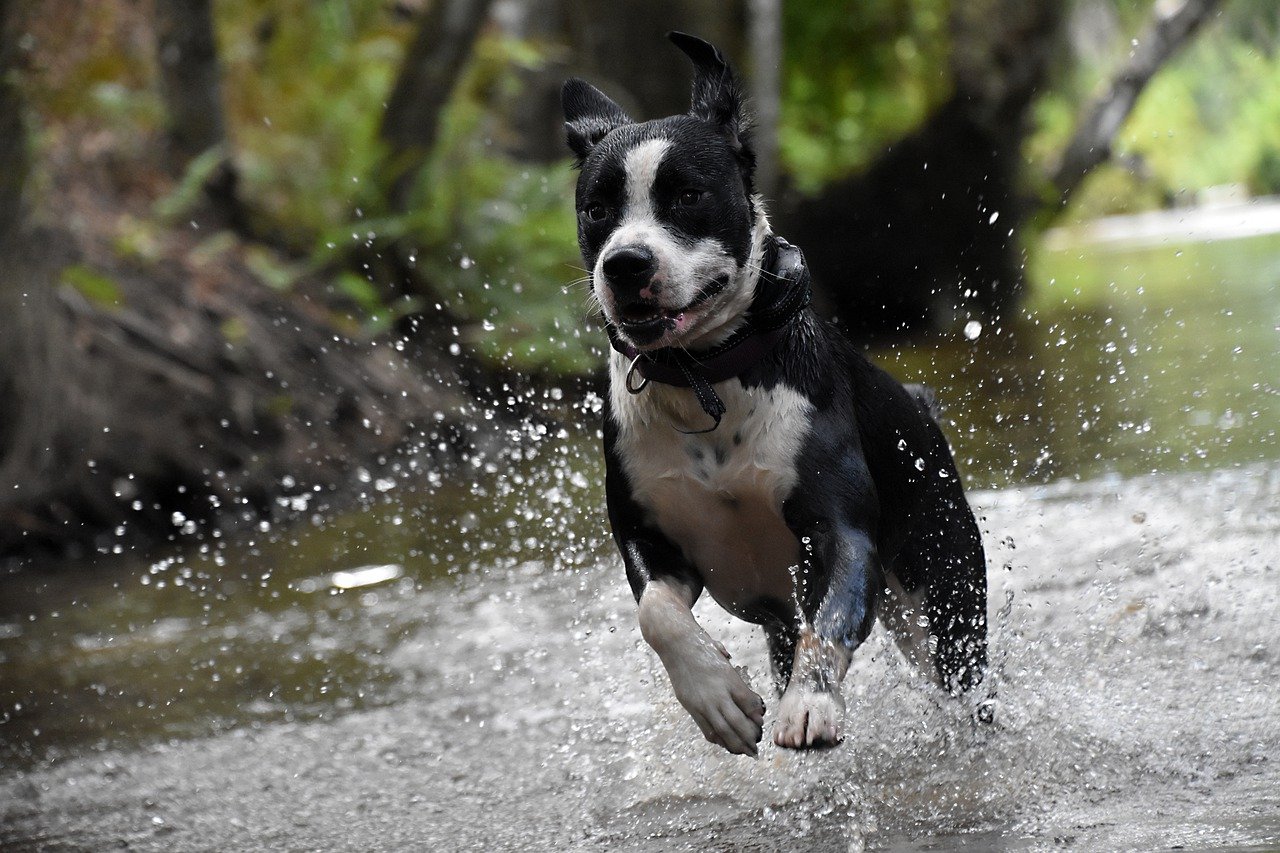
Understanding Shedding
Shedding is a natural process that all pets go through, but it can often leave pet owners feeling overwhelmed. Imagine waking up to find your favorite black sweater covered in golden fur; it’s a common scenario for many pet lovers. Understanding the reasons behind shedding can help you manage it more effectively, ensuring your home stays clean and your pet remains comfortable.
First, it's essential to recognize that not all shedding is created equal. Different breeds have varying shedding patterns, influenced by factors such as genetics, season, and even health. For instance, some breeds, like the Siberian Husky, experience heavy shedding during seasonal changes, while others, like the Poodle, shed much less due to their unique coat structure. To better understand how shedding works, let’s break it down:
| Breed Type | Shedding Characteristics |
|---|---|
| Short-Haired Breeds | Typically shed less, but still require regular grooming to manage loose hair. |
| Long-Haired Breeds | May shed heavily and require more frequent grooming to prevent matting. |
| Hypoallergenic Breeds | Produce less dander and hair, making them ideal for allergy sufferers. |
Aside from breed, external factors play a significant role in shedding. For example, stress can lead to excessive shedding, as can changes in environment or routine. If your pet is experiencing a lot of stress—perhaps due to a move or a new family member—you might notice an uptick in loose fur around the house. Additionally, seasonal changes can trigger shedding as pets prepare for warmer or cooler weather. This is particularly true for dogs and cats that have a thick undercoat.
As a pet parent, it’s crucial to differentiate between normal shedding and excessive shedding. Normal shedding is a part of your pet's life cycle and can be managed with regular grooming. However, if you notice that your pet is shedding excessively or if their coat appears dull or unhealthy, it may be a sign of underlying health issues. In such cases, consulting a veterinarian is always a wise move.
In summary, understanding the nuances of shedding can make a world of difference in how you care for your furry friend. By recognizing the factors that influence shedding and identifying what’s normal for your pet, you can take proactive steps to manage it effectively. So, the next time you find fur on your clothes, remember: it’s just a part of the beautiful bond you share with your pet!
- What causes shedding in pets? Shedding can be caused by a variety of factors including breed, health, and environmental changes.
- How can I tell if my pet is shedding excessively? If your pet's shedding seems out of the ordinary or if their coat appears dull, it may be time to consult a vet.
- What grooming tools are best for reducing shedding? The right grooming tools vary by breed; brushes designed for your pet’s coat type can significantly help manage shedding.
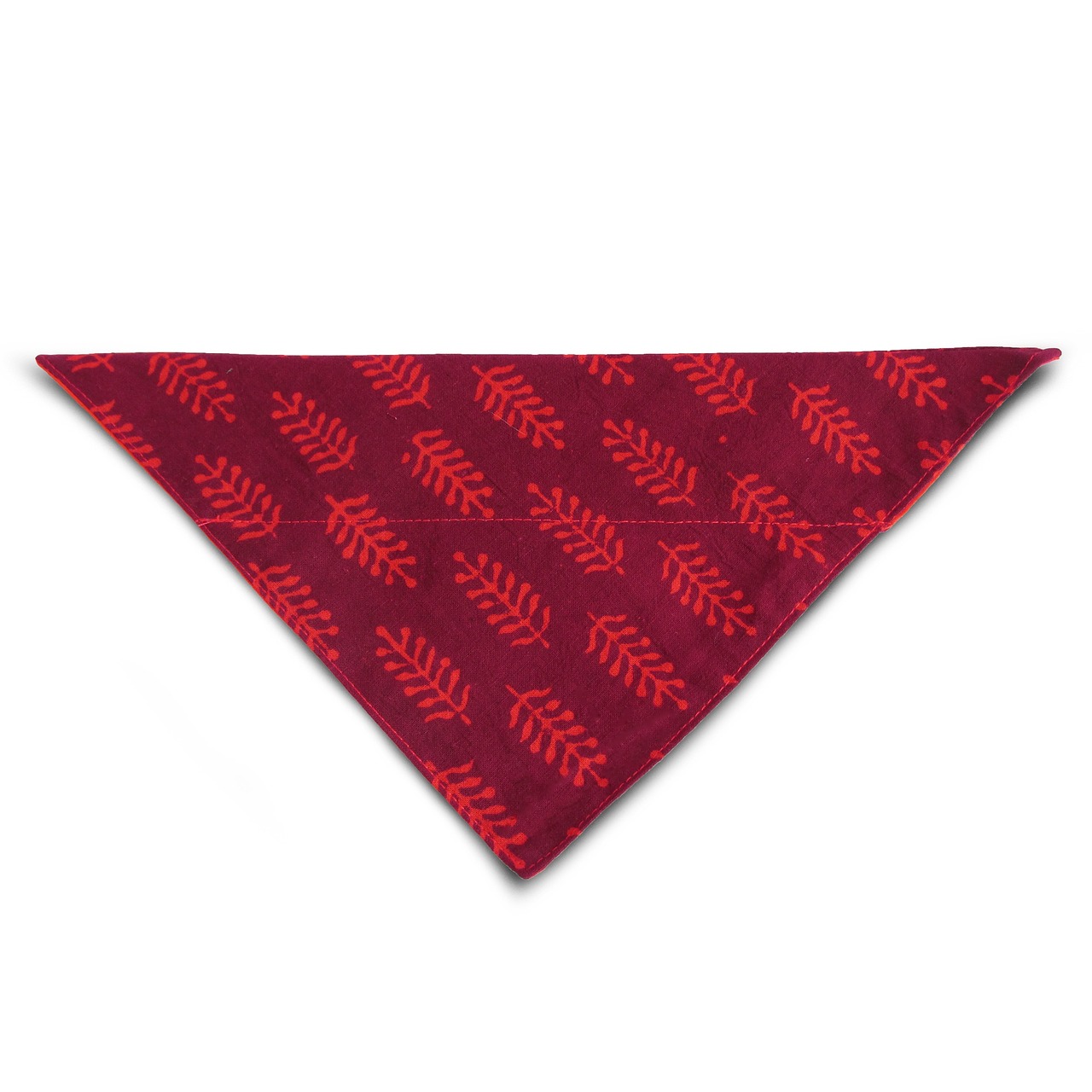
Benefits of Regular Grooming
Regular grooming is not just about keeping your pet looking fabulous; it's a vital part of their overall health and well-being. Think of grooming as a spa day for your furry friend, where they not only get pampered but also benefit from a range of health advantages. One of the most significant benefits of regular grooming is the reduction of shedding. When you groom your pet consistently, you remove loose fur and dander, which helps keep your home cleaner and your pet more comfortable. But that's just the tip of the iceberg!
Moreover, grooming enhances your pet's coat health. By brushing their fur, you distribute natural oils throughout their coat, which keeps it shiny and healthy. This process also prevents matting, especially in long-haired breeds, which can lead to painful skin issues if left unchecked. Regular grooming sessions can also serve as a fantastic bonding experience between you and your pet, strengthening your relationship as you spend quality time together. Imagine how much your pet enjoys those gentle strokes and the attention they receive!
Another crucial aspect of grooming is the early detection of skin problems. While you’re brushing your pet, you can spot unusual lumps, bumps, or irritations that might need veterinary attention. This proactive approach can make a significant difference in your pet's health, catching potential issues before they escalate. Plus, regular grooming can help reduce the risk of parasites, like fleas and ticks, as you can spot them more easily during your grooming routine.
To illustrate the numerous benefits of grooming, consider the following table:
| Benefit | Description |
|---|---|
| Reduces Shedding | Minimizes loose fur in your home, keeping the environment cleaner. |
| Improves Coat Health | Distributes natural oils, keeping the coat shiny and healthy. |
| Enhances Bonding | Strengthens the relationship between you and your pet through quality time. |
| Early Detection of Issues | Allows for the identification of skin problems or parasites. |
In summary, regular grooming is a multifaceted practice that benefits your pet in numerous ways. It's not just about aesthetics; it's about ensuring that your furry companion lives a happy, healthy life. So, grab that brush and make grooming a delightful routine for both you and your pet!
Q: How often should I groom my pet?
A: The frequency of grooming depends on your pet's breed and coat type. Short-haired breeds may only need grooming once a week, while long-haired breeds might require daily grooming to prevent matting.
Q: Can grooming help with my pet's allergies?
A: Yes! Regular grooming can help reduce allergens in your home by removing loose fur and dander, which may alleviate your pet's allergy symptoms.
Q: What should I do if I find a lump while grooming?
A: If you discover any unusual lumps or bumps, it's best to consult your veterinarian for further evaluation.
Q: Are there specific tools I should use for grooming?
A: Absolutely! The right tools depend on your pet's coat type. For example, slicker brushes are great for long-haired pets, while rubber brushes work well for short-haired breeds.
Types of Grooming Tools
When it comes to managing your pet's shedding, the right grooming tools can make all the difference. Just like a painter needs the right brushes to create a masterpiece, pet owners need the proper grooming tools to keep their furry friends looking their best. Choosing the right tools isn't just about aesthetics; it’s about ensuring your pet's coat remains healthy and that your home stays fur-free. So, what types of grooming tools should you consider?
First off, brushes are the cornerstone of any grooming routine. There are various types designed for different coat textures and lengths. For instance, slicker brushes are fantastic for removing loose hair and tangles in both long and short-haired breeds. They have fine, short wires close together, making them perfect for getting deep into the undercoat. On the other hand, bristle brushes work wonders for short-haired breeds, helping to distribute natural oils and create a shiny coat.
Next, combs are essential for finishing touches. They can help you tackle stubborn knots and ensure that no loose hair is left behind. Wide-toothed combs are especially useful for long-haired pets, while fine-toothed combs can help with finer details, such as around the ears and face. The right comb can be the difference between a well-groomed pet and one that looks like they just rolled in a haystack!
Moreover, there are de-shedding tools designed specifically to reduce shedding. These tools typically feature a metal blade that gently removes loose fur from the undercoat without damaging the topcoat. If you have a breed known for heavy shedding, investing in a de-shedding tool can save you countless hours of cleaning up fur around your home.
Don’t forget about grooming gloves! These nifty inventions allow you to groom your pet while petting them, making it a stress-free experience. They’re especially great for pets that may be anxious about traditional grooming tools. Just slide on the glove and start petting your furry friend; the rubber bristles will help collect loose hair and dirt along the way.
Finally, let’s not overlook shampoos and conditioners. While they may not be grooming tools in the traditional sense, they play a critical role in maintaining coat health. A good quality shampoo can help reduce shedding by keeping your pet's skin and coat in top condition. Look for products specifically designed for shedding control, as they often contain ingredients that moisturize the skin and strengthen the hair follicles.
To summarize, here’s a quick table highlighting the different types of grooming tools and their uses:
| Grooming Tool | Best For |
|---|---|
| Slicker Brush | Removing loose hair and tangles |
| Bristle Brush | Distributing natural oils in short-haired breeds |
| Wide-Toothed Comb | Tackling knots in long-haired pets |
| De-shedding Tool | Reducing shedding in heavy shedders |
| Grooming Gloves | Stress-free grooming while petting |
| Shampoo/Conditioner | Maintaining coat health and reducing shedding |
In conclusion, the right grooming tools are essential for keeping your pet’s coat healthy and manageable while minimizing shedding. By understanding the various options available, you can tailor your grooming routine to meet your pet's specific needs, ensuring they look and feel their best!
- How often should I groom my pet? It depends on the breed and coat type. Generally, short-haired pets can be groomed once a week, while long-haired pets may need grooming several times a week.
- Can grooming help with allergies? Yes, regular grooming can help reduce allergens in your home by removing loose fur and dander.
- What if my pet doesn't like being groomed? Start slowly, using gentle tools and offering treats to create a positive association with grooming.
Brushes for Short-Haired Breeds
When it comes to grooming short-haired breeds, the right tools can make all the difference. Unlike their long-haired counterparts, short-haired pets like Beagles, Boxers, and Dachshunds have coats that require specific care to minimize shedding and maintain a sleek appearance. Using the appropriate brushes not only helps in removing loose hair but also promotes a healthier skin and coat. So, what are the best options for your short-haired friend?
One of the most effective tools for short-haired breeds is the rubber curry brush. This brush is designed with soft rubber bristles that gently massage the skin while effectively collecting loose hair. The added bonus? It’s a delightful experience for your pet, almost like a mini spa session! When you use a rubber curry brush, you can expect to see a significant reduction in shedding, as it captures those pesky loose hairs before they end up on your furniture or clothes.
Another fantastic option is the bristle brush. This type of brush is perfect for short-haired breeds because it helps distribute natural oils throughout the coat, enhancing its shine and health. Regular use of a bristle brush can lead to a noticeable improvement in coat texture, making it feel softer and look shinier. Just remember to brush in the direction of hair growth to avoid any discomfort for your pet.
For those stubborn hairs that just won't budge, a de-shedding tool can be a game-changer. These tools are specifically designed to reach deeper into the coat and remove undercoat fur that may not be visible on the surface. Using a de-shedding tool once a week can drastically reduce the amount of fur you find around your home, keeping your environment cleaner and more enjoyable.
It's important to establish a regular grooming routine that suits your pet’s needs. A good rule of thumb is to brush your short-haired pet at least once a week. This not only helps in controlling shedding but also allows you to check for any skin issues or parasites that may be lurking beneath the surface. Think of grooming as a bonding experience—your pet will appreciate the attention, and you'll both enjoy the benefits of a clean, healthy coat.
In summary, the right brushes can transform your grooming routine and significantly reduce shedding in short-haired breeds. Consider trying a combination of a rubber curry brush, bristle brush, and de-shedding tool to see which works best for your furry friend. With consistent grooming, you'll not only keep shedding at bay but also contribute to your pet's overall health and happiness.
- How often should I groom my short-haired pet? Ideally, you should groom them at least once a week to manage shedding and maintain coat health.
- Can I use human brushes on my pet? It's best to use brushes specifically designed for pets, as human brushes may not be effective and could irritate your pet's skin.
- What if my pet doesn't like being brushed? Start slowly and make the experience positive with treats and praise. Gradually increase the brushing time as they become more comfortable.
Brushes for Long-Haired Breeds
When it comes to grooming long-haired breeds, selecting the right brush is akin to choosing the best tool for a craftsman—it can make all the difference! Long-haired pets, such as Persian cats and Golden Retrievers, require specialized grooming tools to maintain their luxurious coats and prevent matting. Regular brushing not only reduces shedding but also helps distribute natural oils throughout the fur, promoting a shiny and healthy appearance.
One of the most effective tools for long-haired breeds is the pin brush. This brush features long, flexible pins that can penetrate deep into the coat, gently detangling knots without pulling or damaging the hair. It's perfect for everyday use, as it can remove loose hair while stimulating the skin, which is essential for a healthy coat. Another excellent option is the slicker brush, which has fine, short wires close together. This tool is fantastic for removing dead hair and preventing matting, especially in breeds with thick undercoats.
Additionally, a wide-toothed comb is invaluable for long-haired pets, particularly when it comes to tackling tangles and mats. Using a comb after brushing can help catch any remaining loose hair and ensure that the coat is completely free of knots. It's important to be gentle, as pulling too hard can lead to discomfort for your furry friend. To optimize your grooming routine, consider the following tips:
- Brush regularly: Aim for at least 3-4 times a week to keep tangles at bay.
- Use the right technique: Start from the tips of the hair and work your way up to the roots to avoid pulling.
- Be patient: Take your time, especially if your pet has a particularly thick or curly coat.
In conclusion, grooming long-haired breeds is not just about aesthetics; it's a vital part of their overall health and well-being. The right brushes can transform a daunting task into a bonding experience, allowing you to spend quality time with your pet while keeping their coat looking fabulous. Remember, a well-groomed pet is a happy pet!
Q: How often should I groom my long-haired pet?
A: Ideally, you should groom your long-haired pet at least 3-4 times a week to prevent matting and reduce shedding.
Q: Can I use human brushes on my pet?
A: It's best to use brushes specifically designed for pets, as human brushes may not be effective and can cause discomfort.
Q: What should I do if my pet has a severe matting issue?
A: If your pet is severely matted, it may be best to consult a professional groomer who can safely remove the mats without hurting your pet.
Q: Are there any specific grooming techniques I should follow?
A: Always start brushing from the tips of the hair and work your way up to the roots. Be gentle and take your time to avoid pulling on your pet's skin.
Grooming Techniques
When it comes to grooming your pet, the right techniques can make all the difference in minimizing shedding and promoting a healthy coat. Think of grooming as a bonding experience—it's not just about keeping your pet looking good; it’s about nurturing their well-being. One of the key techniques to consider is the frequency of brushing. Depending on your pet's coat type, you may need to brush them daily or just a few times a week. For instance, short-haired breeds might only require a quick brush once a week, while long-haired breeds could benefit from daily grooming sessions to prevent tangles and mats.
Another vital aspect of grooming is the method you use. For example, when brushing, always start from the base of the coat and work your way out to the tips. This technique helps to remove loose hair effectively and reduces the risk of pulling on your pet's skin, which can be uncomfortable for them. You can use a gentle, sweeping motion with the brush to remove dead hair without causing any distress. It’s almost like giving them a relaxing massage while you tidy up their fur!
Additionally, incorporating bathing into your grooming routine can significantly impact shedding. Regular baths help to remove loose fur and dander, but it’s essential to use a pet-friendly shampoo that won’t strip their coat of natural oils. Bathing your pet every 4 to 6 weeks is generally a good rule of thumb, but be sure to adjust based on their specific needs and lifestyle. If your pet loves to roll in the mud or play in the water, you might need to bathe them more frequently!
Moreover, don’t underestimate the importance of post-grooming care. After brushing and bathing, consider using a conditioning spray or leave-in conditioner to keep your pet’s coat soft and shiny. These products can help detangle fur and provide additional moisture, making it easier to manage shedding. Just like humans use conditioner after shampooing, your furry friends can benefit from a little extra love too!
Lastly, remember that grooming isn’t just a chore; it’s an opportunity to check for skin issues or abnormalities. While you’re brushing, take a moment to look for any unusual lumps, bumps, or irritations on your pet’s skin. Early detection can make a world of difference in their health.
In summary, effective grooming techniques include:
- Regular brushing based on coat type.
- Gentle brushing methods to avoid discomfort.
- Regular bathing with appropriate products.
- Using conditioning products for coat maintenance.
- Checking for skin issues during grooming sessions.
By incorporating these techniques into your routine, you’ll not only reduce shedding but also enhance your pet’s overall health and happiness. So grab that brush, and let the grooming adventures begin!
Q: How often should I groom my pet?
A: Grooming frequency varies by breed. Short-haired pets may need grooming once a week, while long-haired breeds often require daily attention.
Q: Can I over-groom my pet?
A: Yes, over-grooming can irritate your pet's skin. It's essential to find a balance and pay attention to your pet's comfort levels.
Q: What tools are essential for grooming?
A: Basic tools include a brush suitable for your pet’s coat type, a comb, and pet-friendly shampoo for baths.
Q: How can diet affect my pet’s shedding?
A: A balanced diet rich in essential nutrients can improve coat health and reduce shedding. Consider consulting your vet for dietary recommendations.
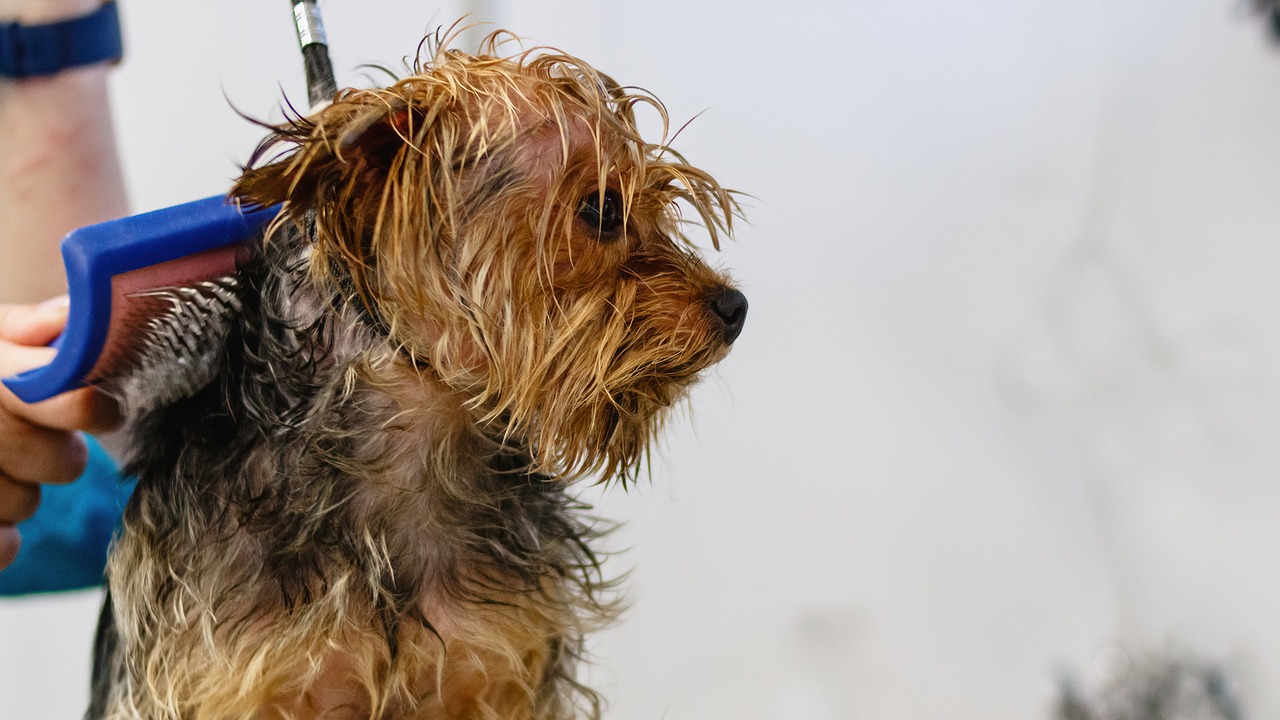
Diet and Shedding
When it comes to our furry friends, diet plays a pivotal role not just in their overall health but also in the condition of their coat. You might be surprised to learn that what goes into your pet's bowl can directly influence the amount of shedding you experience. Just like us, pets need a balanced diet rich in essential nutrients to maintain a healthy coat. A diet lacking in these nutrients can lead to an increase in shedding, making it crucial to evaluate what your pet is eating.
So, what are these magical nutrients that can help reduce shedding and promote a shiny coat? First and foremost, protein is essential. It serves as the building block for hair, and without adequate protein, your pet may experience hair loss and excessive shedding. Additionally, omega-3 and omega-6 fatty acids are vital for skin health, helping to keep the skin hydrated and reducing flakiness that can lead to shedding. Foods rich in these fatty acids can work wonders for your pet's coat.
Let’s break it down a bit more. Here’s a quick look at some dietary components that can help:
- High-quality protein: Look for pet foods that list real meat as the first ingredient.
- Omega fatty acids: Fish oil and flaxseed oil are excellent sources.
- Vitamins and minerals: Vitamins A, E, and biotin are known for their coat-enhancing properties.
But it’s not just about what you feed your pet; it’s also about their hydration. Just like humans, pets need plenty of water to keep their skin and fur healthy. Dehydration can lead to dry skin, which often results in increased shedding. Make sure your pet always has access to fresh, clean water. If your dog or cat isn’t drinking enough, consider adding wet food to their diet or using a pet water fountain to entice them.
It’s also worth noting that certain dietary changes may be necessary during seasonal transitions. For instance, many pets shed more in the spring and fall as they adapt to temperature changes. During these times, increasing their intake of omega fatty acids can be beneficial. You might also consider incorporating supplements specifically designed to support coat health, but always consult your veterinarian before making any changes to your pet's diet.
In conclusion, a well-balanced diet rich in protein, healthy fats, and essential nutrients is crucial for maintaining your pet’s coat health and minimizing shedding. By paying attention to what goes into their bowl, you’re not just feeding them; you’re investing in their overall well-being and happiness.
Q: What foods should I avoid to reduce shedding?
A: Avoid low-quality pet foods that contain fillers and artificial ingredients. These can lead to poor coat health and increased shedding.
Q: How often should I change my pet’s diet?
A: It's generally good to stick with a consistent diet unless your veterinarian recommends a change. However, seasonal adjustments can be beneficial.
Q: Can supplements help with shedding?
A: Yes, supplements that contain omega fatty acids, vitamins, and minerals can enhance coat health and reduce shedding.
Supplements for Coat Health
When it comes to maintaining a healthy coat for your furry friend, supplements can play a crucial role. Just like humans, pets require certain vitamins and nutrients to keep their skin and fur in top condition. A well-balanced diet is essential, but sometimes, our pets need a little extra boost to achieve that shiny, luscious coat we all admire. So, what should you consider when looking for the right supplements?
First and foremost, Omega-3 fatty acids are a game changer for coat health. These essential fats help reduce inflammation, which can lead to excessive shedding and skin issues. They also promote a shiny, soft coat that feels great to the touch. You can find Omega-3s in fish oil supplements, which are easy to add to your pet's food. Just a few drops can make a world of difference!
Another important supplement to consider is biotin. This B-vitamin is known for its role in promoting healthy skin and fur. Biotin helps strengthen the hair follicles, reducing breakage and shedding. Many pet owners report noticeable improvements in their pet's coat condition after incorporating biotin into their diet. It can be found in various forms, such as chewable tablets, powders, or even as part of multivitamin formulations.
It's also worth mentioning zinc, a mineral that supports skin health and can help prevent itching and irritation. A deficiency in zinc can lead to a dull coat and increased shedding. If you're unsure whether your pet is getting enough zinc, consult your veterinarian, who may recommend a supplement or dietary adjustments.
To give you a clearer idea of how these supplements can benefit your pet, here's a simple table summarizing the key nutrients:
| Supplement | Benefits | Sources |
|---|---|---|
| Omega-3 Fatty Acids | Reduces shedding, promotes shiny coat | Fish oil, flaxseed oil |
| Biotin | Strengthens hair follicles, reduces breakage | Chewable tablets, powders |
| Zinc | Supports skin health, prevents irritation | Multivitamins, specific zinc supplements |
While supplements can enhance your pet's coat health, they should not replace a balanced diet. Always consult with your veterinarian before introducing new supplements, as they can help determine your pet’s specific needs based on their age, breed, and health status. Remember, every pet is unique, and what works for one might not work for another.
Moreover, keep an eye on your pet's hydration. Proper water intake is just as important as supplements. Dehydration can lead to dry skin and excessive shedding, so ensure your furry friend has access to fresh water at all times. A healthy coat is a reflection of overall well-being, and by combining the right diet, supplements, and hydration, you can help your pet shine like never before!
- What are the best supplements for my pet's coat? Omega-3 fatty acids, biotin, and zinc are among the top choices for promoting coat health.
- How long does it take to see results from supplements? Typically, you may start noticing improvements in your pet's coat within a few weeks, but it can vary based on the individual pet.
- Can I give my pet human vitamins? It's best to avoid giving human vitamins to pets unless specifically recommended by a veterinarian, as some ingredients can be harmful to animals.
Hydration and Skin Health
When it comes to keeping your pet's coat shiny and healthy, hydration plays a crucial role. Just like humans, pets need an adequate amount of water to maintain their overall health, and this is especially true for their skin and fur. A well-hydrated pet is less likely to experience dry skin, which can lead to excessive shedding and discomfort. Imagine your pet's coat as a beautiful garden; without enough water, the plants wilt and lose their vibrancy. Similarly, a lack of hydration can leave your pet's fur looking dull and lifeless.
So, how can you ensure your furry friend is getting enough water? First, it’s essential to monitor their water intake. On average, dogs should drink about 1 ounce of water per pound of body weight each day, while cats generally require less, around 3.5 to 4.5 ounces of water per 5 pounds of body weight. If your pet is active or the weather is hot, they may need even more. To help you keep track, here’s a simple table that outlines the recommended daily water intake based on your pet's weight:
| Pet Weight (lbs) | Water Intake (oz) |
|---|---|
| 5 | 5 oz |
| 10 | 10 oz |
| 20 | 20 oz |
| 50 | 50 oz |
| 100 | 100 oz |
Incorporating moisture-rich foods into your pet's diet can also enhance their hydration levels. Foods such as watermelon, cucumbers, and even broth can be delightful additions that not only hydrate but also provide essential nutrients. Think of these foods as a refreshing drink on a hot day; they can make a world of difference in keeping your pet feeling cool and comfortable.
Moreover, you might want to consider the environment where your pet lives. Indoor heating during winter or air conditioning in summer can lead to dry air, which can further exacerbate skin issues and shedding. Placing a humidifier in your home can help maintain a healthy moisture level in the air, which benefits both you and your pet. Just like a well-watered garden thrives, your pet will flourish in a well-hydrated environment.
In conclusion, ensuring your pet stays hydrated is not just about quenching their thirst; it’s about promoting overall skin health and reducing shedding. By monitoring their water intake, incorporating hydrating foods, and maintaining a suitable environment, you can help your furry friend maintain a luscious coat that’s the envy of all the neighborhood pets.
- How much water should my pet drink daily? On average, dogs need about 1 ounce of water per pound of body weight, while cats need about 3.5 to 4.5 ounces per 5 pounds.
- Can diet affect my pet's hydration? Yes! Foods with high moisture content, like fruits and vegetables, can help keep your pet hydrated.
- What are signs of dehydration in pets? Signs include dry gums, lethargy, and a loss of skin elasticity. If you notice these, consult your vet.
- How can I encourage my pet to drink more water? Try providing fresh water frequently, using a pet water fountain, or adding water to their food.
Frequently Asked Questions
- What causes my pet to shed more than usual?
Shedding can be influenced by various factors such as breed, season, and health. Some pets naturally shed more due to their coat type, while others may experience increased shedding due to stress, allergies, or dietary deficiencies. It's essential to monitor your pet's shedding patterns and consult a vet if you notice a sudden change.
- How often should I groom my pet to reduce shedding?
The frequency of grooming depends on your pet's coat type. For short-haired breeds, brushing once a week may suffice, while long-haired breeds may require grooming several times a week. Regular grooming not only helps reduce shedding but also keeps your pet's coat healthy and shiny.
- Are there specific grooming tools I should use?
Absolutely! The right grooming tools can make a significant difference. For short-haired breeds, a rubber brush or a bristle brush works well, while long-haired breeds benefit from a slicker brush or a wide-toothed comb. Choosing the right tool for your pet's coat type is crucial for effective shedding management.
- Can diet affect my pet's shedding?
Yes, diet plays a vital role in your pet's coat health. A balanced diet rich in essential fatty acids, vitamins, and minerals can help reduce shedding and promote a healthy coat. Consider incorporating high-quality pet food and possibly supplements to improve coat condition.
- What supplements can help with shedding?
Supplements like omega-3 fatty acids, biotin, and vitamins A and E are known to support coat health and reduce shedding. Always consult your veterinarian before adding any supplements to your pet's diet to ensure they are safe and appropriate for your furry friend.
- How does hydration impact my pet's shedding?
Proper hydration is crucial for maintaining healthy skin and fur. Dehydration can lead to dry skin, which may cause excessive shedding. Ensure your pet has access to fresh water at all times and consider adding moisture-rich foods to their diet to support hydration.
- Is shedding normal for all pets?
Yes, shedding is a natural process for all pets, but the amount can vary significantly between breeds. While some pets may shed minimally, others may shed year-round or seasonally. Understanding your pet's normal shedding pattern can help you manage it more effectively.

